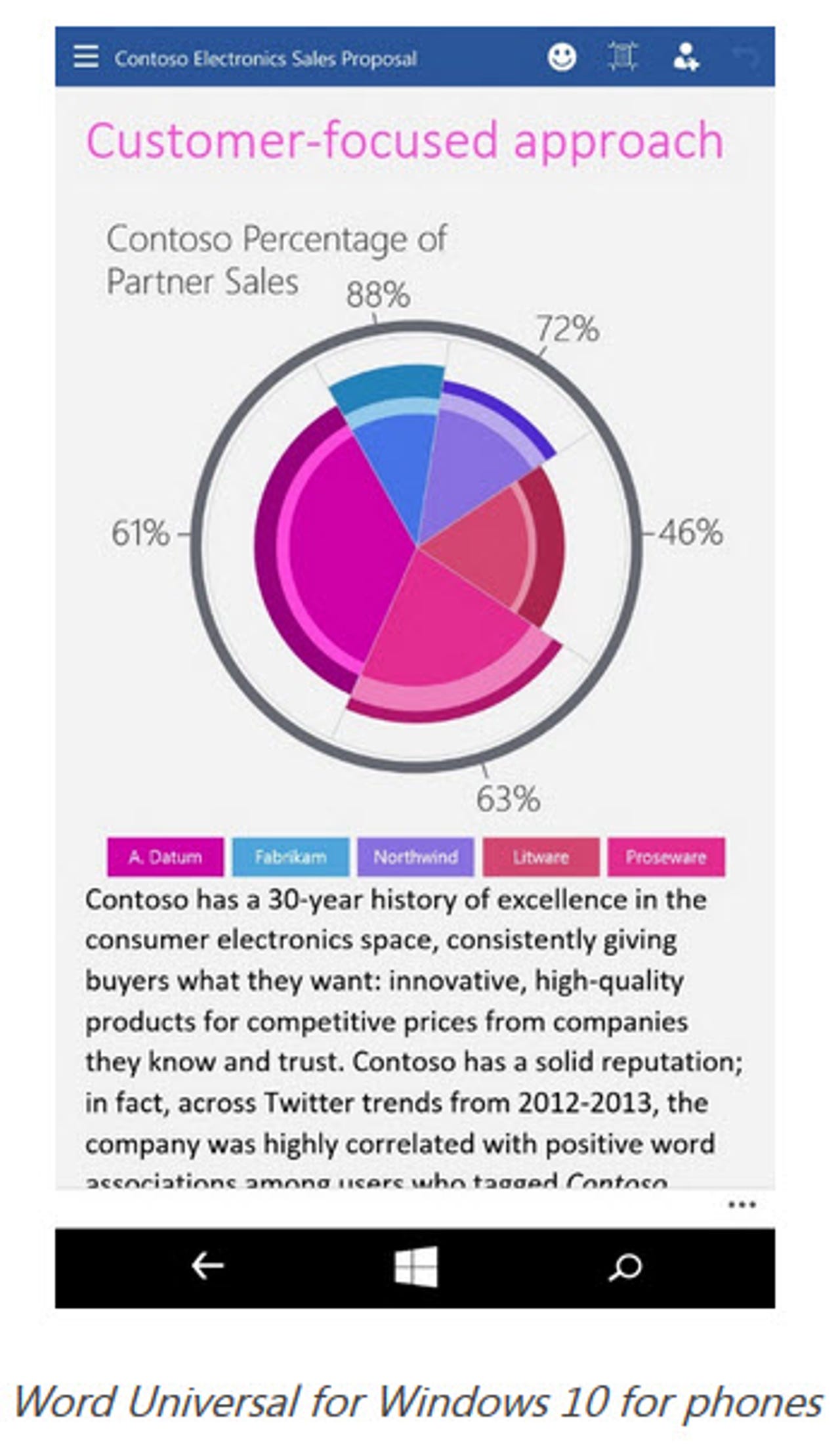What's next for Microsoft's 'universal' Office apps

Microsoft is developing and testing simultaneously two different versions of its next release of Office: Office Desktop and Office Universal.

"Office Universal" refers to the new versions of the core, touch-first Office apps -- Word, Excel, PowerPoint, OneNote and Outlook -- that Microsoft is building to run on Windows 10 Desktop and Windows 10 Mobile. Microsoft made a first test build of these apps available for testers running Windows 10 Desktop on PCs, laptops and tablets back in February.
Update (April 30): A Microsoft spokesperson says the company is now expecting to deliver the Office Universal app previews for Windows 10 Mobile "early next week."
These Office Universal apps for Windows Phones will be more akin to the Office apps Microsoft has been rolling out on iPhones and Android phones, as company officials have said and shown in the past. (Office Universal apps for Windows and Windows Phones share a considerable amount of code in common with Office for iOS and Office for Android.)
Microsoft is evaluating whether to make the April test build of these Universal Office apps for Windows Phones available as a separate preview on their own or as part of a new test build of Windows 10 Mobile for phones, Spataro said.
Featured
As Microsoft officials have said before, Universal Office apps are built from a common shared core, with user interfaces modified to work best on devices with a particular screen size. Universal Office apps will be delivered and serviced via the unified Windows Store.
Microsoft is attempting to distinguish the Office 2016 for Windows and Office Universal suites in a couple of different ways. Office Desktop apps are for professional content creation, sophisticated authoring, data analysis, visualization, and similar tasks where users need precision control of the keyboard and mouse, Spataro said. The Desktop apps will be fully featured and support advanced functionality like macros.
The Office Universal apps, which won't include all the Office Desktop bells and whistles, are more about on-the-go mobile productivity, where there can be some content-creation happening, but where users are likely more focused on content absorption and communication.
"We anticipate these desktop apps from Office being around for a very long time," Spataro said. "It's not desktop vs. mobile."
Microsoft officials have said previously that the coming Office Universal apps will be bundled for free on Windows 10 devices with screen sizes of 10.1 inches and below. On Windows devices of screen sizes of 10.2 inches or greater, Microsoft execs have yet to reveal pricing and licensing plans for Office (Desktop and/or Universal). Many are expecting Microsoft to follow suite with what it's done with Office for iOS and Android -- specifically to require an Office 365 subscription in order to unlock more advanced functionality in Office Universal.
Microsoft execs have said to expect the new versions of Office -- for Windows PCs, Macs and the 'Universal' apps -- to all be available later this calendar year.